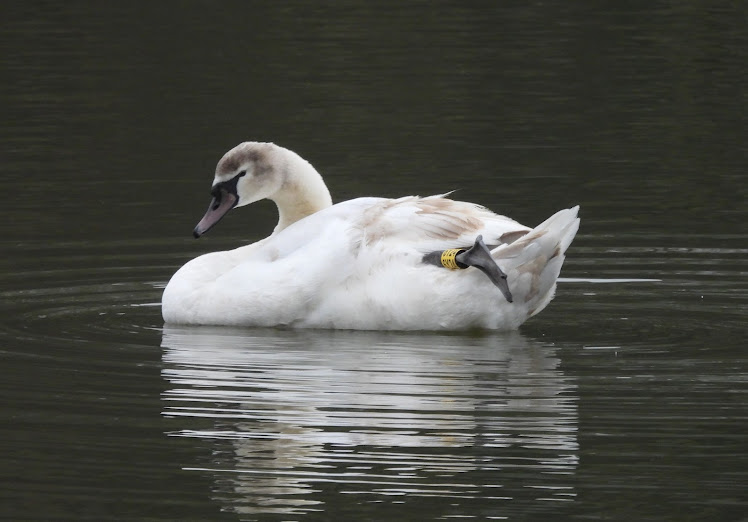In addition, there was a pair of Canada Geese on the middle reservoir, along with a Moorhen that was sitting on an empty nest. The 2 Great-crested Grebe pairs were still on site, and I also managed 5 Mandarin Ducks ( 4 males and a female), which are always a bonus at this time of the year.
When I got home, I spent some time watching the garden birds for the BTO's Garden Birdwatch Scheme, and was treated to another visit from this beautiful male Sparrowhawk, this time sitting on the feeders for 10 minutes, before chasing, unsuccessfully, after a Blackbird.
Sparrowhawk
I'm pretty sure its the same bird as last week, as it has 2 white spots on the back of its head. Just need to get a ring on it!!






